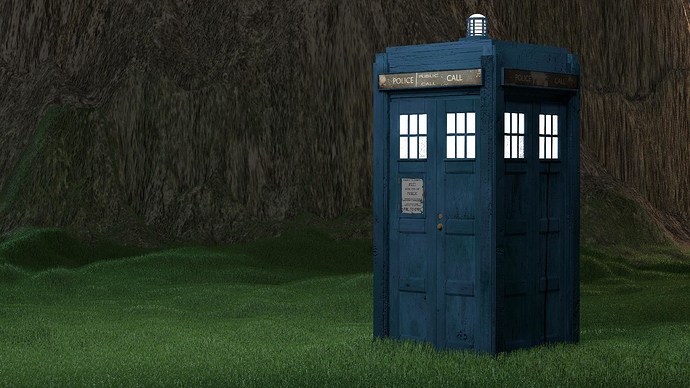I really have no clue on where to post this. I was just wondering if someone could help me understand what cycles render is. It seems to just make things worse and doesn’t load any textures. Here is the normal blender render pic
http://imageshack.us/photo/my-images/827/room013.jpg/
and here is the pic from Cycles render
http://imageshack.us/photo/my-images/41/room013cycles.jpg/
I don’t understand, I didn’t mess with any settings, unless it’s required? Everyone says to use cycles but I don’t see why lol. Like I said I really don’t know if this is in the right area but I’m not really a frequent forum user so please go easy on me :o
Cycles doesn’t use any of the blender internal’s texture or materials settings. So pretty much you have to apply all the textures and stuff from the beginning. Cycles also works by adding more samples/passes to complete a render, in the render settings you’ll see a section called integrator. In here you can control the cycles rendering engine, the more samples the better an image will look BUT it will also take longer to finish. The other options are detailed in the blender manual, google blender 2.6 documentation towards the end there is a whole section just for cycles. First set the preset to Full Global Illumination then in samples set render to a decently large number. It depends on how much time you have and how powerful your CPU is. I have a quad core Q6600 overclocked to 3.2ghz so 1000 samples takes me 6.5 hours on a complicated scene. You can also set the preview render sample here which is the number of samples you’ll do if you set the viewport to render, its just like setting the viewport to material or wire view. Finally if you have an nVidia GPU you can set cycles to use the GPU in the user settings > system section. From there in the render settings set the feature set to experimental and you’ll see your GPU selected. This works with ATI GPUs too but as of now the stable/released version of cycles can only do clay renders with ATI cards.
Google cycles tutorials and you’ll find many by great blender artists.
So pretty much have to set it to cycles before making the scene? Yeah, this was made in blender render. I have a core i3 with intel HD. In blender render it takes about 4 minutes to render this scene with AA set to 16 and full samples. It shouldn’t take that long in cycles I would guess but with your quad doing 6 hours I bet mine would take double cause it’s only a dual (But has 4 threads). Thanks for the heads up :), Ill be looking around for them tutorials, haven’t seen any on blenders site so wasn’t sure if there was any.
Well yes you have to set it to cycles but the way materials are setup is completely different. Ill show you an example with my current project
The grass, which is actually just 7 objects emitted on a plane (ground) using an emitter, has materials setup like this
If you’ve worked with the blender compositor this should look very familiar. The material is defined by “shaders” which can be mixed and matched to create different materials. In this case since grass is mostly diffuse but has some shiny and translucency I mixed translucent and diffuse shaders. I also created a mix within the translucent and diffuse shaders to give the grass a bit of texture. With this materials can get infinitely complicated. You can also see how I brought in textures to the grass and how I mapped them with the first input node.
Well it depends on how many samples you set cycles for, samples in blender internal and cycles are completely different. There is also no AA or SSS option in cycles right now, there is AO which you can set in the world settings. Cycles was made from the bottom up as a realistic renderer that takes A LOT of shortcuts. So it’s not the most physically accurate but it gets really close. The lesser amount of samples you use the noisier the image will be, at the same time some times the more samples you use you might end up with black or white dots depending on what shaders you use. To fix this you can either A increase the samples, B decrease the use of shaders like Glossy, or Glass C increase the light paths or D fix it in photoshop. Considering I have a very aged Q66 from the Core2Quad era your corei3 might have similar performance.

